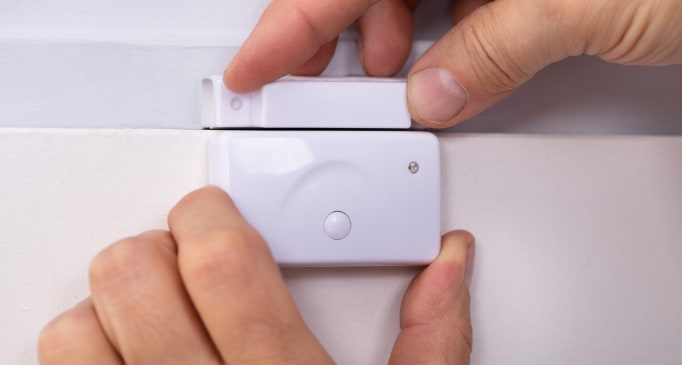
What Are The Kinds Of Window And Door Alarms And What Should I Install?
Door and window alarms are the foundation of your home security system. They defend your most vulnerable access points and dissuade burglaries by triggering your alarm. But what types are there, and what should you use? Discover more about window and door alarms and decide what’s best for your home.
Possibilities For Door And Window Alarm Sensors
You have access to various door and window alarm sensors to meet your home’s unique needs and your preferences. Select from one of these kinds - contact sensors, glass break sensors, and motion sensors.
Contact Sensors Give You A Steady Defense
Practical and simple to hook up, magnetic contact sensors are the most widely used window and door alarms. They feature a two-piece system with a magnet installed on one side and a sensor body on the opposing side. The magnet generally fastens to the frame, and the sensor connects to the door or window sash. When the door or window opens, the magnetic field breaks, and your security alarm is set off.
Glass Break Sensors Perceive Vibration, Sound, Or Both
Glass break alarms can be found as shock sensors, acoustic sensors, or a blend of technologies. Shock sensors distinguish the vibration resulting from glass breaking and are installed straight on the window or the bordering frame. Acoustic sensors identify sound and can affix to walls. One acoustic sensor can be enough for many windows according to its detection range. They make sense for locations like basements that are a ways from bedrooms and prone to broken glass invasions. You will also discover dual sensors that trip only when both vibration and sound are detected.
Motion Sensors Offer An Additional Alternative
When protecting your entry points, you have another choice with motion detectors. You can arrange motion sensors so your most at risk windows and doors are within their scope.
Further Possibilities for Window And Door Alarm Sensors
You’ll find additional choices with door and window alarm sensors. Initially, you’ll need to figure out whether to choose wired or wireless components. Wireless is routinely preferred due to the versatility and ease of installation.
Luckily, wireless connectivity and security have significantly advanced over a short time, making these sensors a great choice. Even so, there might be instances when wired sensors are encouraged, such as moving into a home with existing wiring for security.
Pick From Different Kinds of Contact Sensors
Most homeowners get contact sensors that affix directly on windows, doors, and the surrounding frame. They mesh well with your home and don’t occupy much space. Slim versions are even less detectable and work with different types of entrances, like sliding glass doors. Even so, if you would rather not have a visible sensor for design concerns or in light of a specialized window or door type, you can opt for recessed sensors. These secure inconspicuously inside your entry and frame and are virtually unnoticeable, but they require drilling to install the sensor.
